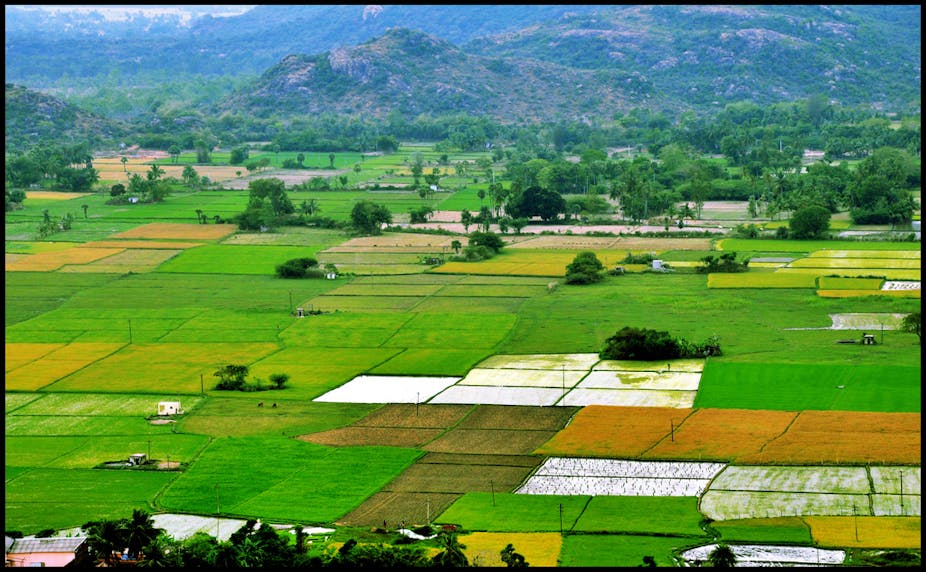So, we have to feed an extra 2.5 billion people by 2050. For those of us interested in the future of biodiversity on this planet, this poses an uncomfortable challenge. It is also the topic of a recent paper in Science by Ben Phalan and colleagues at Cambridge University.
Clearly, we need to ramp up food production considerably but how will we do this?
Simply put, there are two options:
1) convert more land for agriculture;
2) increase yields from existing agricultural land.
Of course we will end up doing a bit of both (it will be interesting to see whether we can actually reach our food production target either way – but that is another story).
But is one or the other approach better from the perspective of biodiversity conservation?
Should we be encouraging intensification of agriculture, to get the most out of every farmed hectare, and spare as much “natural” habitat as possible (known as “land sparing”)?
Or should we be encouraging “land sharing”: using “wildlife-friendly” farming, despite such methods generally producing smaller yields? (Of course, smaller yields mean more land conversion is needed to produce the same amount of food.)

The “land sparing vs. land sharing” debate is not new, but Phalan’s study is a neat analysis using data on birds and trees from Ghana and India.
Phalan and colleagues tackled the question: as food production (measured in both energy value and profit) is ramped up, do more species win from land sparing, or from land sharing?
This debate is something we all partake in every time we buy (or choose not to buy) a product such as chocolate from shade-grown plantations.
Many studies have shown that intensive agricultural methods generally result in poorer outcomes for wildlife, compared to less-intensive approaches.
Also, production systems such as shade-grown cacao tend to provide much better habitat than conventional monocultures (agriculture where just one species is grown).
What this research should prompt us to think about, though, is the impact beyond the operation in question.
If yields are lower in such wildlife-friendly systems, then, given rising global demand, such low-yield operations might simply increase pressure to convert more land elsewhere.
Phalan and colleagues estimated the yields from low- and high-intensity farming, and worked out how much more land would need to be cleared to make up for lower yields in low-intensity systems.
They used information on birds and trees in landscapes with different levels of production output to project how different species’ population sizes would respond to different ways of using the land.
While shifting from low- to high-intensity farming is generally bad for wildlife, shifting from forest to even low-intensity farming is generally disastrous.
As agricultural output increases, there are two possible scenarios. If production intensity is ramped up but forest conversion is minimised, far fewer species decline dramatically. If land is shared, species decline more rapidly.

So, for birds and trees in Ghana and India, the answer was clear – there are simply far more species which stand to lose from land sharing than land sparing.
Despite some of the media reaction, there are two things the study does not do. It does not trash organic agriculture, nor does it shed much light on whether agri-environment schemes, such as those mandated by the European Union, are a waste of money.
European agro-ecosystems are fundamentally different from recently converted forests. In Europe, traditional agricultural practices have operated for millennia, and modern conservation goals in Europe are generally entwined with those agroecosystems.
On the other side of the equation, there is far greater potential for increased yields in Ghanaian farming systems than those in Europe (or Australia).
So it seems likely there would be more “winners” from wildlife-friendly farming in Europe than in a region from which most of the forest system has been cleared within the past hundred years.
Nevertheless, it remains important to explore not only the benefits of such schemes for particular species within Europe, but also the possible “land leakage”. Does wildlife-friendly farming in Europe add to pressure for land conversion (and potentially species loss) elsewhere in the world? And which path should we follow in Australia?
Just as conservation action in one place might simply move development pressure to another place, intensification has its own effects on the environment. These were not accounted for by Phalan and colleagues.
Intensive agriculture often relies on significant fertiliser use (especially in Australia), increased fuel use, and chemicals (although some of the “low-intensity” systems they studied involved high chemical use, too).
All of these things affect biodiversity well beyond the tilled field, but their impacts are difficult to quantify.
And what of the long-term sustainability of the production systems themselves?
If we choose intensive farming, will the less-biodiverse system be less resilient and decline in productivity, requiring us to clear more land anyway?

Finally, if we take Australia as an example, there are many species (such as the superb parrot or south-eastern red-tailed black-cockatoo) we could lose entirely if we don’t invest in their conservation on farmed land.
There can never be a single, simple answer to the “land sharing vs. land sparing” debate. In fact, we still have more questions than answers.
But they are important questions – and we need to keep trying to answer them if we are to have our biodiversity and eat, too.
Want to know how land sharing and land sparing plays out in Australia? Read: “A global juggling act”

